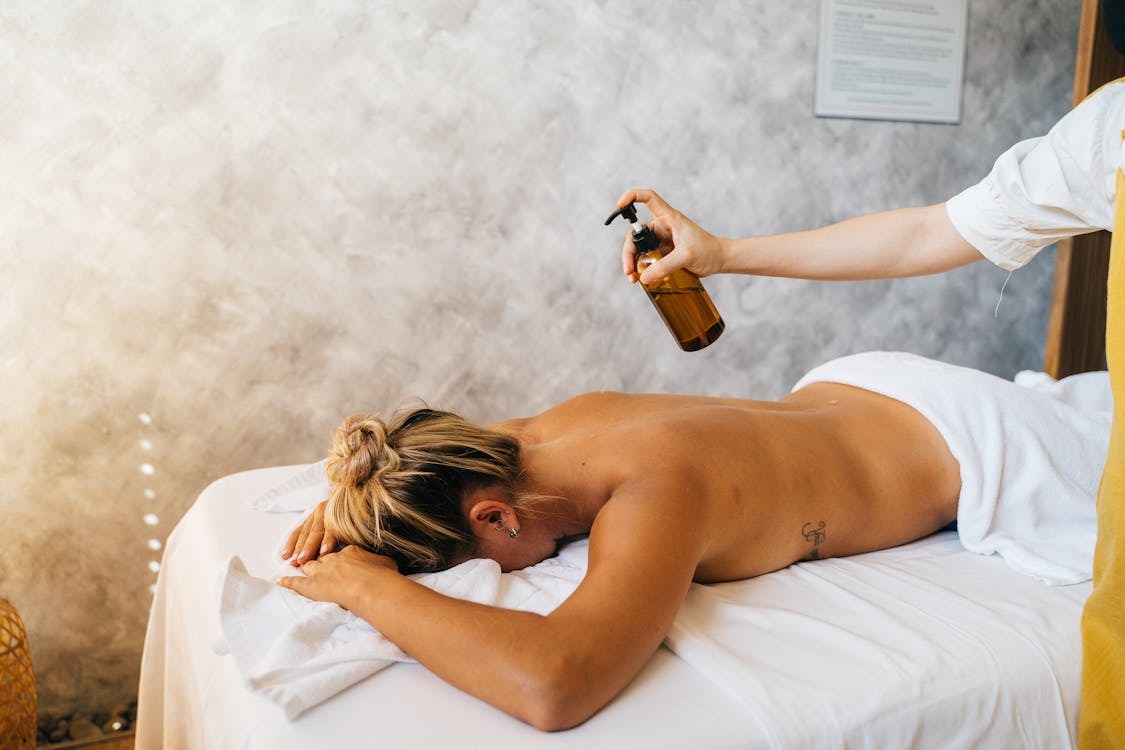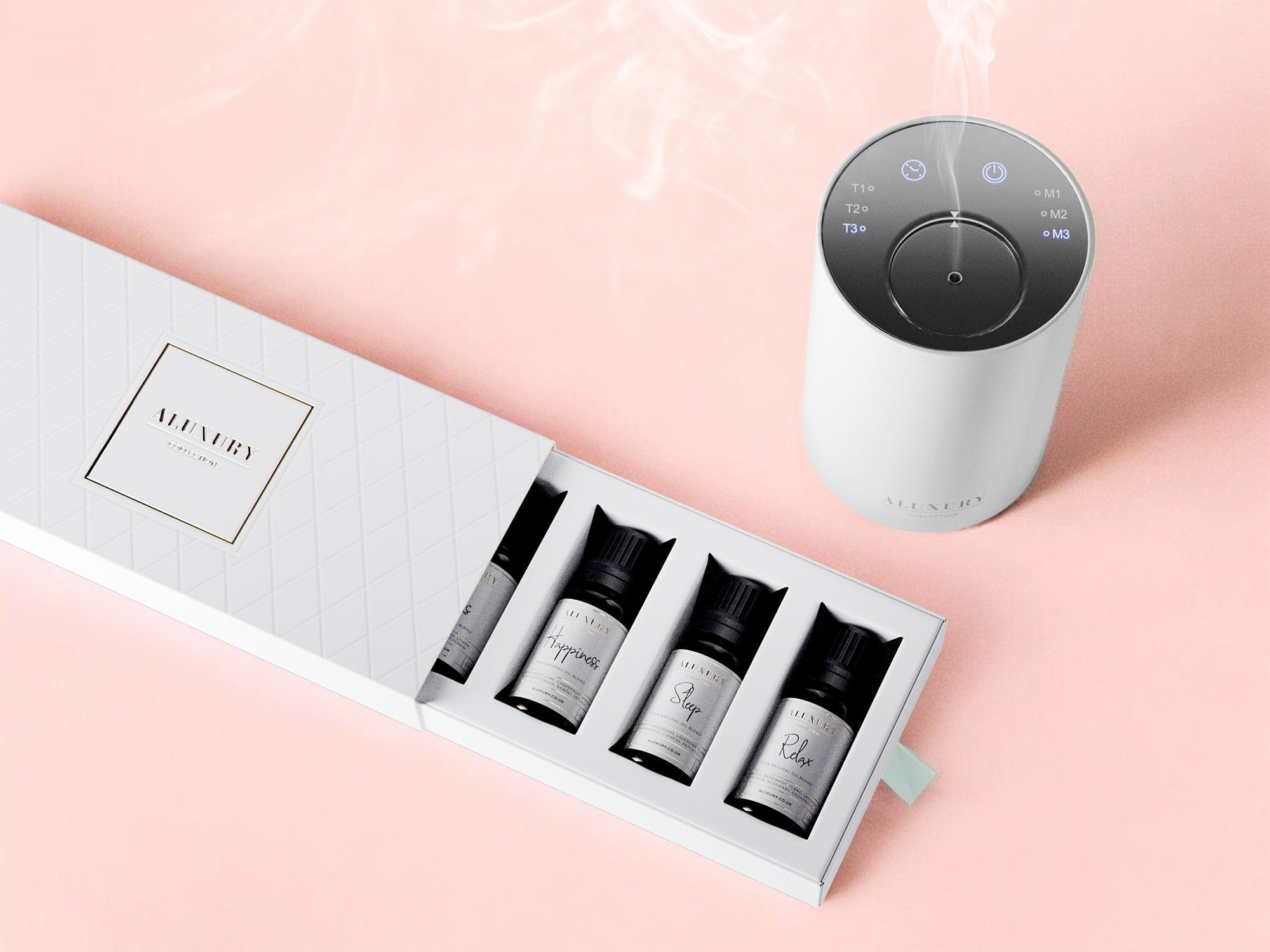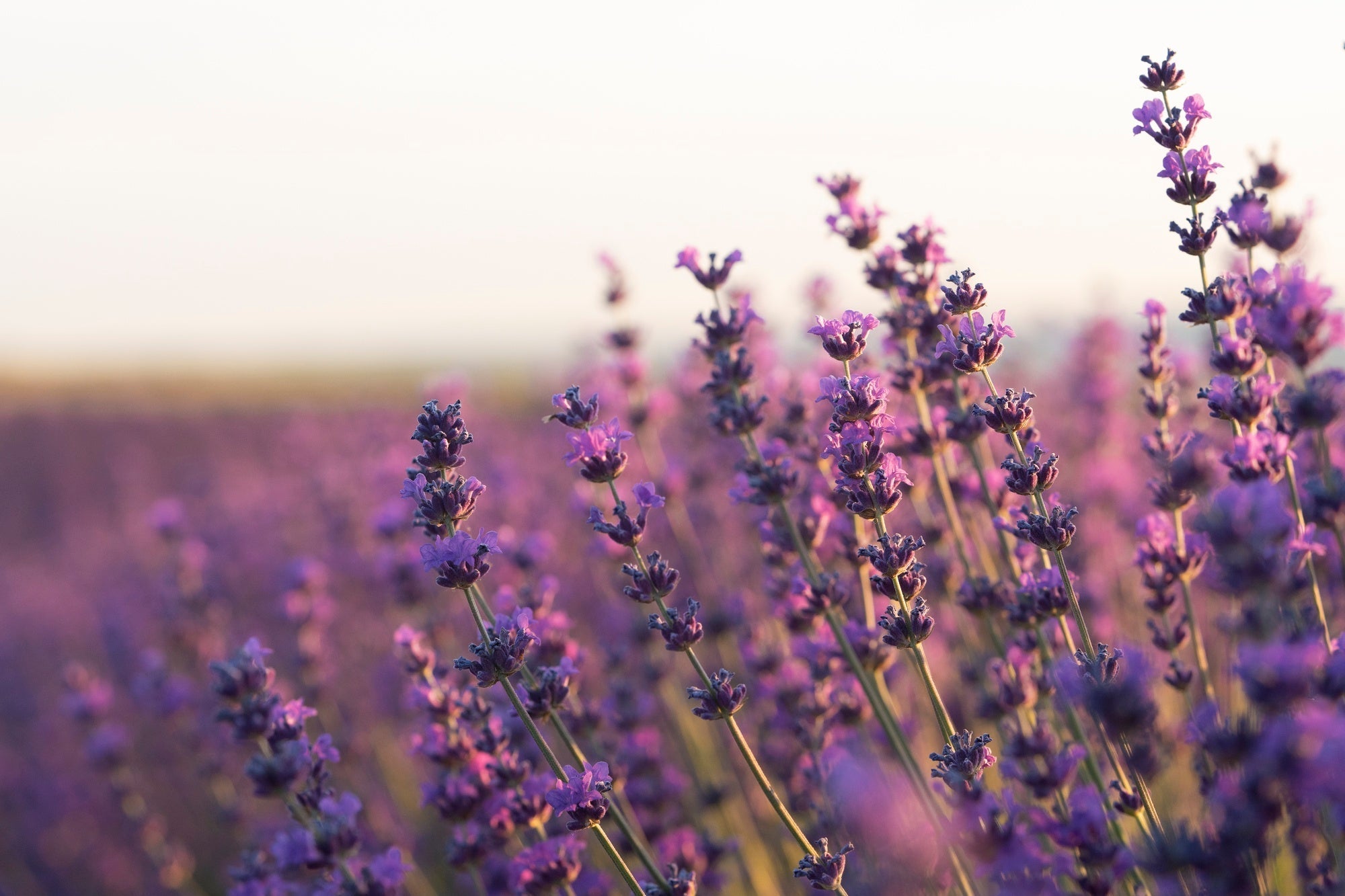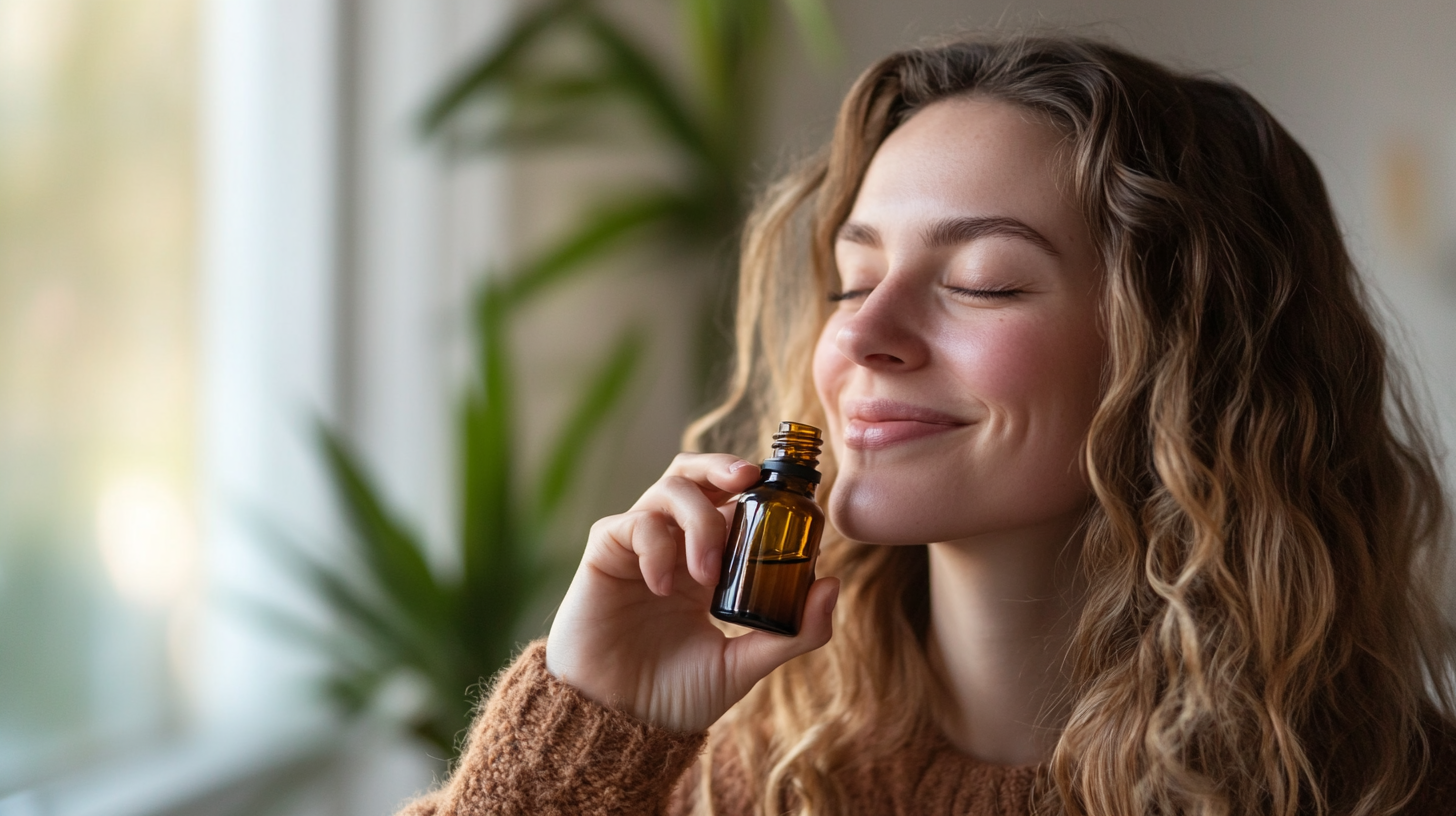Anxiety is a common experience for many people, and it can manifest in various ways, such as restlessness, tension, or even physical symptoms like increased heart rate.
Essential oils, derived from plants, have been used for centuries to support emotional well-being and promote relaxation. In this detailed guide, we’ll explore the best essential oils for anxiety, how they work, and how to use them safely for optimal benefits.
What Are Essential Oils?
Essential oils are concentrated plant extracts that capture the essence of a plant’s scent, flavour, and therapeutic properties. They are obtained through steam distillation or cold pressing, which preserve their active compounds.
The oils contain volatile molecules absorbed through the skin or inhaled into the lungs, impacting the brain’s limbic system, which manages emotions, stress, and memories.
When inhaled, these tiny molecules trigger chemical responses that can calm the mind and body. The sense of smell directly influences the nervous system, allowing affordable essential oils to promote emotional balance and reduce feelings of anxiety. This process is why aromatherapy, the therapeutic use of essential oils, has become popular in managing stress and anxiety naturally.
Top Calming Essential Oils for Anxiety
Essential oils are a natural remedy known for their ability to reduce stress and promote relaxation. This section covers ten effective essential oils, detailing how each oil works, its benefits, application methods, safety tips, and the best times and places to use them.
1. Lavender Oil
- How It Works: Lavender oil contains compounds like linalool and linalyl acetate, which have sedative properties. When inhaled, it influences the limbic system, reducing cortisol levels and promoting relaxation.
- What It Does: Lavender helps calm the nervous system, reduces tension, and improves sleep quality. It’s particularly useful for people with insomnia or those experiencing nervous tension.
- How to Apply: Diffuse lavender oil in your bedroom before sleep or apply diluted drops to your temples, neck, or wrists. You can also add it to a warm bath.
- Safety Tips: Always dilute lavender oil with a carrier oil for topical use. Avoid contact with the eyes and do not ingest it.
- When and Where to Use: Lavender oil is ideal for bedtime routines, yoga sessions, or during moments of high stress.

2. Chamomile Oil
- How It Works: Chamomile contains esters that bind to GABA receptors in the brain, promoting a calming effect. This interaction helps the body manage stress and relax the nervous system.
- What It Does: It soothes anxiety, reduces stress, and improves mood. Chamomile is also effective in promoting restful sleep.
- How to Apply: Use in a diffuser, apply topically with a carrier oil, or add a few drops to your bath. Chamomile tea, paired with a few drops of oil in the air, can enhance relaxation.
- Safety Tips: Chamomile is generally safe but may cause allergic reactions, particularly in people allergic to ragweed. Always perform a patch test.
- When and Where to Use: Ideal before bedtime or after a long day, chamomile works well in bedrooms or other relaxation spaces.
3. Bergamot Oil
- How It Works: Bergamot oil’s citrus scent has been shown to reduce cortisol levels and boost mood. It has a stimulating yet calming effect, which can uplift while reducing anxiety.
- What It Does: Known for its mood-enhancing properties, bergamot also soothes nervous tension and promotes a sense of peace.
- How to Apply: Diffuse bergamot oil in the living room or workspace. It can also be applied topically when diluted, but avoid sun exposure as it may cause photosensitivity.
- Safety Tips: Never apply undiluted bergamot directly to the skin, and always avoid direct sunlight after use.
- When and Where to Use: Ideal for morning routines or workspaces where stress relief and positivity are needed.
4. Frankincense Oil
- How It Works: Frankincense is anti-inflammatory and supports respiratory function, promoting deep breathing and relaxation. Its woody scent is grounding, which calms the mind and body.
- What It Does: It reduces stress and anxiety, supports meditation practices, and enhances mindfulness by promoting deep breathing.
- How to Apply: Use in diffusers or add a few drops to a massage oil blend. Apply diluted oil on your wrists and temples for a calming effect.
- Safety Tips: Dilute before applying to the skin and avoid sensitive areas. Do not ingest unless under medical supervision.
- When and Where to Use: Best during meditation or relaxation exercises and ideal for creating a tranquil environment in yoga studios or meditation spaces.

5. Ylang Ylang Oil
- How It Works: Ylang-Ylang reduces sympathetic nervous system activity, often heightened during stress. It helps lower blood pressure and heart rate, calming the mind.
- What It Does: It alleviates anxiety, improves mood, and can also be energising, making it ideal for balancing emotional stress.
- How to Apply: Diffuse it in the air, mix it with a carrier oil for massages, or add it to a warm bath.
- Safety Tips: Always dilute, as undiluted use may cause skin irritation. Avoid using it if you have sensitive skin or allergies.
- When and Where to Use: Use during afternoon breaks when you need a mood lift or during a massage session for a calming yet revitalising effect.
6. Sweet Orange Oil
- How It Works: The uplifting scent of sweet orange helps reduce anxiety by interacting with the limbic system to promote happiness.
- What It Does: It boosts mood while providing a calming effect, making it an excellent option for daytime use.
- How to Apply: Inhale directly from a tissue, diffuse in the air, or use it in skincare routines with carrier oil.
- Safety Tips: Avoid sun exposure after topical application as it can make the skin sensitive to light.
- When and Where to Use: Perfect for mornings or during work hours when a positive, calming boost is needed.

7. Patchouli Oil
- How It Works: Patchouli’s earthy scent is grounding and stabilises emotions, promoting balance and relaxation.
- What It Does: It alleviates stress, reduces anxiety, and supports emotional stability during overwhelming moments.
- How to Apply: Add it to a diffuser, use it in bath water, or blend it with a carrier oil for massages.
- Safety Tips: Dilute before skin application to avoid irritation. Test on a small skin area first.
- When and Where to Use: Suitable for evening relaxation, after stressful events, or during mindfulness exercises.
8. Clary Sage Oil
- How It Works: Clary sage oil contains compounds that influence serotonin levels, helping to lift mood and reduce anxiety.
- What It Does: It relaxes the body, alleviates nervous tension, and promotes a sense of calm.
- How to Apply: Add it to a diffuser, use it in massage blends, or inhale directly for quick relief.
- Safety Tips: Pregnant women should avoid clary sage, and skin application should always be diluted.
- When and Where to Use: Effective during meditation sessions or before sleep for calming effects.
9. Rose Oil
- How It Works: Rose oil’s floral scent uplifts and calms the mind by reducing stress hormone levels.
- What It Does: It alleviates symptoms of anxiety and depression and is often used in emotional healing practices.
- How to Apply: Diffuse rose oil or mix it with a carrier oil for skin application, especially in pulse points.
- Safety Tips: Ensure proper dilution; rose oil can be potent and may cause skin reactions if undiluted.
- When and Where to Use: Best used during self-care routines, such as baths or in intimate spaces to create a soothing atmosphere.
10. Geranium Oil
- How It Works: Geranium oil balances hormones and supports emotional stability by reducing anxiety symptoms.
- What It Does: It helps manage stress, calms the mind, and promotes emotional well-being.
- How to Apply: Diffuse it or apply diluted oil to the skin, especially wrists and temples.
- Safety Tips: Conduct a patch test before widespread use, as it may cause reactions for sensitive skin types.
- When and Where to Use: Effective during hormonal shifts or stressful situations, and can be used in bedrooms or living areas for a calming effect.
When used correctly, these essential oils offer natural ways to manage anxiety and promote calmness. Incorporate them into your daily routine for improved emotional well-being and relaxation.
How to Use Calming Essential Oils
The application of essential oils varies based on the desired effect. Here are some detailed methods for using them safely:
- Diffusion: This method disperses the oil into the air, allowing you to inhale it over time. Add 3-5 drops of your chosen essential oil to a diffuser filled with water. Diffusion helps maintain a calming environment throughout the day or night, ideal for spaces where you spend a lot of time.
- Inhalation: Inhaling directly is a quick and effective way to use essential oils. Place a few drops of oil on a tissue or cotton ball and breathe deeply. This method is particularly effective in moments of acute anxiety when you need immediate relief.
- Topical Application: Essential oils can also be applied to the skin, but diluting them first is crucial. Mix a few drops of essential oil with a carrier oil like coconut, jojoba, or almond oil before applying it to the skin. Apply to pulse points, such as the wrists, temples, or behind the ears. This allows the oil’s properties to be absorbed and create a calming effect.
- Bathing: Adding essential oils to a bath combines the benefits of inhalation and topical absorption. Mix 5-10 drops of essential oil with a tablespoon of carrier oil or Epsom salts before adding it to the bath water. This can help soothe both the mind and body, making it an effective way to unwind and reduce anxiety before bedtime.

Safety Tips for Using Essential Oils
While essential oils offer numerous benefits, using them safely is essential:
- Proper Dilution: Essential oils are highly concentrated, and applying them directly to the skin can cause irritation or allergic reactions. Dilute oils with carrier oil (e.g., coconut, grapeseed, or olive oil) to a 2-3% dilution (about 12 drops of essential oil per 30ml of carrier oil).
- Avoid Ingestion: Ingesting essential oils is not recommended without guidance from a healthcare provider. Most essential oils are unsafe for internal use as they may cause severe side effects or toxicity.
- Patch Testing: Before using a new oil, perform a patch test by applying a diluted drop on your forearm and waiting 24 hours to ensure no reaction occurs.
- Quality Control: Always purchase oils from reputable brands. Look for labels like “organic” or “therapeutic grade” and check for the botanical name to ensure the purity of the product.
Combining Essential Oils for Enhanced Effects
Blending different oils can increase their effectiveness. Here are a few combinations:
- Lavender and Chamomile: This blend promotes deep relaxation, especially before sleep. It enhances the calming properties of both oils, providing a potent solution for reducing nighttime anxiety.
- Bergamot and Frankincense: These two work together to create a meditative atmosphere, ideal for grounding the mind and managing stress. Diffuse this blend during yoga or meditation sessions for maximum benefits.
- Sweet Orange and Ylang Ylang: This uplifting combination calms the mind and boosts the mood, making it suitable for daytime use when you need an energy lift without feeling anxious.
Final Thoughts on Calming Essential Oils
Essential oils are a natural, accessible option for managing anxiety. Integrating them into daily routines, like baths, diffusions, or massages, can enhance overall well-being and create a peaceful atmosphere.
However, essential oils should not replace professional treatment for anxiety; they work best as a complementary tool. Always consult a healthcare provider for concerns or pre-existing health conditions.






Share: